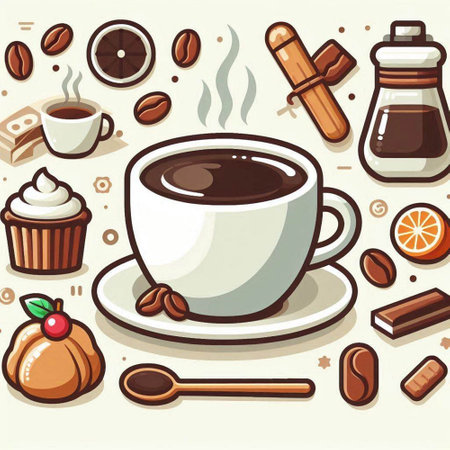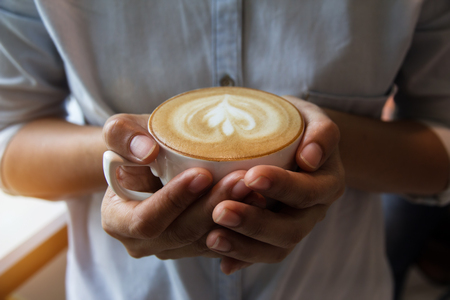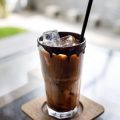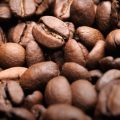Introduction to American Coffee Cocktail Culture
Coffee and alcohol—two cornerstones of American beverage culture—have long been intertwined in a delicious dance that unites early morning pick-me-ups with late-night indulgence. From bustling city bars to cozy mountain lodges, the art of blending robust coffee with smooth spirits has evolved into a distinct tradition within the American bar scene. This rich heritage draws inspiration from classic European concoctions but is uniquely shaped by local flavors, ingredients, and preferences across the United States. As you explore the world of boozy brews, youll discover how each region puts its own creative spin on beloved coffee cocktails, making them not just drinks, but cultural experiences. In this journey through American coffee cocktail culture, we’ll uncover how different states and cities have transformed timeless recipes into regional icons—showcasing everything from New York’s sophisticated espresso martinis to New Orleans’ decadent café brûlot. Get ready to sip your way across America as we delve into the stories, techniques, and equipment behind these favorite caffeinated creations.
2. East Coast Traditions: Boozy Brews from New York to Boston
The East Coast stands as a major hub for coffee cocktail innovation, merging the fast-paced lifestyles and historic influences of cities like New York and Boston into distinctive boozy brews. These urban centers aren’t just about classic drip coffee—they’re about transforming caffeine into elevated experiences that reflect local tastes, attitudes, and even weather patterns.
Espresso Martini: Manhattan’s Signature Sip
No conversation about East Coast coffee cocktails is complete without spotlighting the Espresso Martini, which has become an essential staple in Manhattan’s trendiest bars. Born in the city’s nightlife scene, this cocktail blends vodka, fresh espresso, and coffee liqueur—often Kahlúa or a high-end artisanal substitute—to deliver both energy and elegance. Bartenders across NYC personalize their recipes, sometimes adding chocolate bitters or swapping out vodka for bourbon to suit local palates.
Irish Coffee Variations: Boston’s Cozy Classic
Boston’s bar culture leans toward the comforting warmth of Irish Coffee, but locals don’t settle for the standard recipe. Instead, they experiment with regional twists—like using locally roasted beans or subbing in maple syrup for sugar—which perfectly complement New England’s chilly weather and storied Irish-American heritage. These adaptations highlight how Bostonians combine tradition with innovation to create a drink that feels both familiar and new.
Comparing East Coast Favorites
| Cocktail | Main Spirits | Distinctive Twist | Typical Setting |
|---|---|---|---|
| Espresso Martini (Manhattan) | Vodka, Coffee Liqueur | Fresh espresso shot; sometimes chocolate bitters or bourbon swap | Trendy cocktail bars, rooftop lounges |
| Irish Coffee (Boston) | Irish Whiskey | Locally roasted beans; maple syrup; seasonal cream infusions | Pubs, cozy cafes, winter gatherings |
This regional approach demonstrates how each city infuses its unique identity into every glass. Whether it’s the Espresso Martini fueling late-night conversations in Manhattan or a maple-sweetened Irish Coffee warming up a snowy Boston evening, the East Coast shapes its favorite boozy brews around local culture and community rituals.

3. Southern Sips: New Orleans Coffee Cocktails and Beyond
The American South brings its own distinct flavor to coffee cocktail culture, blending hospitality with a love for robust spirits and deep, roasted coffee notes. Nowhere is this tradition more iconic than in New Orleans—a city renowned for its vibrant nightlife and inventive beverages. The Café Brûlot stands out as a classic example, combining strong black coffee, brandy, orange zest, cloves, cinnamon, and sugar. Traditionally flambéed tableside, this drink showcases the South’s penchant for dramatic presentation and bold taste.
Beyond the Café Brûlot, Southern bartenders are putting their own modern spin on coffee cocktails by incorporating regional staples like bourbon and Tennessee whiskey. These spirits add a smooth, caramelized undertone that pairs beautifully with rich espresso or cold brew. Pecan liqueurs and syrups also make frequent appearances, infusing drinks with nutty sweetness that reflects the area’s agricultural roots.
Classic Roots: The Heritage of Southern Coffee Cocktails
Southern coffee cocktails aren’t just about the booze—they’re about history and ritual. The meticulous process behind the Café Brûlot, for example, transforms simple ingredients into an aromatic spectacle, making it a favorite during holiday gatherings and special occasions in New Orleans. This tradition has inspired contemporary mixologists throughout Louisiana and beyond to develop new recipes that pay homage to their roots while pushing creative boundaries.
Modern Innovations: Bourbon & Pecan Infusions
Across the South, you’ll find bars experimenting with cold brew bourbon fusions, whiskey-infused affogatos, and even pecan espresso martinis. These drinks often highlight local distilleries and roasters, creating a uniquely Southern flavor profile—smoky from the barrel-aged spirits, earthy from fresh-brewed coffee, and sweet from locally sourced pecans or cane sugar.
Regional Standouts
Whether you’re sipping a fiery Café Brûlot at a French Quarter jazz bar or trying a bourbon cold brew at a Nashville speakeasy, Southern coffee cocktails capture the essence of their region: warm, inviting, and always full of character. For coffee enthusiasts and cocktail lovers alike, exploring these Southern sips offers an authentic taste of American ingenuity and hospitality.
4. The Midwest Touch: Comforting Coffee Drinks for Cold Weather
When winter blankets the Midwest in snow, locals turn to soul-warming coffee cocktails that embody both hospitality and heartiness. This region’s boozy brews are not just drinks—they’re traditions designed to take the edge off icy evenings, using robust flavors and local spirits to create comfort in a cup.
Brandy as the Spirit of Choice
Unlike other regions that favor whiskey or rum, Midwesterners often reach for brandy when crafting their signature hot coffee concoctions. Brandy’s smooth, sweet profile blends harmoniously with rich brewed coffee, producing a drink that’s both mellow and warming—perfect for thawing out after a day in the cold.
Classic Midwest Coffee Cocktails
| Name | Main Ingredients | Tasting Notes |
|---|---|---|
| Wisconsin Brandy Coffee | Brewed coffee, brandy, sugar, whipped cream | Creamy, sweet, gently spiked warmth |
| Hot Nutty Irishman | Coffee, Frangelico, Baileys Irish Cream, whipped cream | Nutty aroma, velvety texture, rich finish |
| Maple Bourbon Latte | Espresso, bourbon, maple syrup, steamed milk | Smooth bourbon heat with a hint of sweetness |
After-Dinner Rituals and Social Sipping
Coffee cocktails in the Midwest often double as after-dinner indulgences. It’s common for hosts to offer guests a warm mug after a hearty meal—think Sunday suppers or holiday gatherings. These drinks serve as an invitation to linger at the table, fostering connection while combating the chill outside.
Home Brewing Tips for Midwest-Style Coffee Cocktails
- Choose medium-to-dark roasted beans for depth and richness.
- Preheat mugs to keep drinks warmer longer.
- Don’t skimp on quality dairy—fresh whipped cream is a must.
The Midwest’s approach to coffee cocktails is all about comfort and community. Whether you’re winding down from shoveling snow or sharing stories with friends around the fire, these spirited brews bring people together and turn any evening into a cozy celebration.
5. West Coast Innovations: Craft Coffee Bars and Modern Mixology
When it comes to pushing the boundaries of American coffee cocktail culture, the West Coast stands out as a beacon of creativity and experimentation. Cities like Portland and Los Angeles have become hotspots for an innovative intersection of third-wave coffee expertise and cutting-edge mixology, resulting in some of the most unique boozy brews in the country.
Portland: The Epicenter of Artisanal Coffee Cocktails
Portland’s reputation as a coffee lover’s haven extends seamlessly into its cocktail scene. Here, local baristas and bartenders collaborate to create signature drinks that highlight single-origin beans, house-made syrups, and locally distilled spirits. Specialty equipment—from precision pour-over kettles to nitro infusion systems—ensures each cocktail is crafted with technical perfection. Menu favorites often include cold brew negronis, espresso old fashioneds, and inventive takes on Irish coffee using Oregon whiskey and small-batch bitters.
Los Angeles: Hollywood Glam Meets Coffee Innovation
In LA, the craft coffee movement merges with celebrity-level mixology for a truly show-stopping experience. Rooftop bars and hidden speakeasies feature coffee cocktails that are as visually stunning as they are delicious. Think smoked espresso martinis with mezcal, oat milk white Russians topped with edible gold leaf, or CBD-infused cold brew spritzes served over crystal-clear ice spheres. Here, state-of-the-art espresso machines sit side by side with high-end shakers, molecular gastronomy kits, and custom glassware to deliver an unforgettable drinking experience.
Equipment-Driven Creativity
The West Coast approach is defined by its embrace of both traditional bar tools and modern coffee gadgets. High-pressure espresso machines, siphon brewers, rapid infusers, and even sous-vide setups are common behind the bar. These tools empower bartenders to extract nuanced flavors from their beans and spirits, allowing for bold experimentation—whether its clarifying coffee with milk-washing techniques or carbonating cold brew for a sparkling twist.
This region’s relentless innovation has influenced coffee cocktail menus nationwide, inspiring both seasoned professionals and adventurous home enthusiasts to reimagine what a boozy brew can be. On the West Coast, every cup is an opportunity for creative expression—one that honors both the heritage of American mixology and the artistry of specialty coffee.
6. Gear Up: Essential Tools and Ingredients for At-Home Coffee Cocktails
Bringing America’s regional coffee cocktail culture into your own kitchen starts with the right gear and ingredients. Whether you’re channeling a New Orleans Café Brûlot or a Pacific Northwest Espresso Martini, investing in quality equipment and American spirits is key to recreating these boozy brews at home.
Must-Have Equipment for Coffee Cocktail Crafting
Espresso Machines & Coffee Makers
A reliable espresso machine is the backbone of most standout coffee cocktails. If you prefer drip or cold brew, an American-made brewer like a Technivorm Moccamaster or a Toddy Cold Brew System will do the trick. Go for freshly ground beans—regional roasts from places like Seattle or Brooklyn add an extra layer of authenticity to your drinks.
Cocktail Shakers & Bar Tools
No home bar is complete without a sturdy cocktail shaker. Opt for a Boston shaker for versatility, and don’t forget essentials like a jigger (for precise pours), muddler (for infusing flavors), and a Hawthorne strainer. These tools will help you achieve that pro-level mix found in top American bars.
Key Ingredients: Spirits, Syrups, and More
American Spirits: Whiskey, Bourbon, Rum, and Vodka
For true regional flair, choose locally distilled spirits. Kentucky bourbon brings Southern warmth to Irish Coffee riffs, while California craft vodkas are ideal for modern Espresso Martinis. Explore small-batch American rums or even Texas whiskeys to give your cocktails a distinct twist that reflects the diversity of U.S. cocktail culture.
Coffee Liqueurs & Regional Add-Ons
Kahlúa is classic, but consider craft alternatives like St. George NOLA Coffee Liqueur or locally produced crème liqueurs. For that signature touch, incorporate ingredients inspired by different regions—think maple syrup from Vermont, chicory syrup from Louisiana, or even Oregon hazelnut bitters.
Sourcing Tips for Authentic American Flavors
Support local distilleries and coffee roasters by sourcing directly from their online shops or visiting farmers’ markets. Many regions also offer subscription services for both beans and spirits, ensuring you always have fresh ingredients on hand for your next at-home happy hour.
Pro Tip:
Always pre-chill your glassware before serving hot or cold coffee cocktails—it’s a bartender’s secret for keeping flavors crisp and temperatures spot-on.
7. Conclusion: Toasting Regional Flavors and Emerging Trends
As we wrap up our journey through the diverse world of American coffee cocktails, it’s clear that this spirited culture is evolving as rapidly as the specialty coffee movement itself. Across the country, bartenders, baristas, and home enthusiasts are not only reviving classic recipes but also pushing boundaries by integrating local ingredients, regional spirits, and artisanal coffee beans. The result is a vibrant tapestry of flavors that celebrate both tradition and innovation.
Recent trends point toward an increased appreciation for authenticity and place-based identity in coffee cocktails. From the bourbon-laced concoctions of Kentucky to Oregon’s craft liqueur infusions, local flavors are being highlighted like never before. Sustainability is also taking center stage, with bars seeking out ethically sourced coffees and partnering with regional distilleries to create unique, eco-conscious drinks. The rise of nitro cold brew cocktails and lower-proof, sessionable options shows how American palates are shifting toward beverages that balance complexity with drinkability.
Ultimately, the American coffee cocktail landscape is more dynamic than ever. Whether you’re sipping a classic Irish Coffee in San Francisco or discovering a smoky mezcal-coffee creation in Austin, there’s never been a better time to explore what each region has to offer. As tastes continue to evolve and new trends emerge, one thing remains constant: Americans’ love for innovation and their willingness to toast the best of both worlds—coffee and spirits—in every glass.


